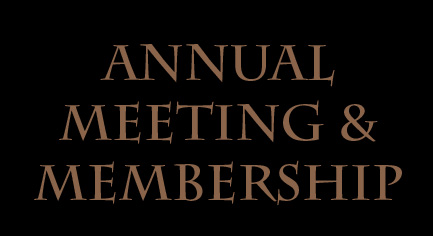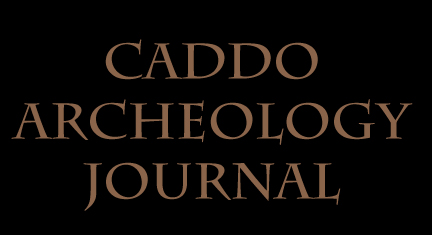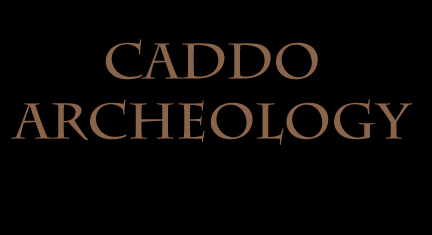Referenced Cited
Brown, J. A.
|
1996
|
The Spiro Ceremonial Center: The Archaeology of Arkansas Valley Caddoan Culture in Eastern Oklahoma. 2 Vols. Memoirs No. 29. Museum of Anthropology, University of Michigan, Ann Arbor.
|
|
2006
|
Where's the Power in Mound Building? An Eastern Woodlands Perspective. In Leadership and Polity in Mississippian Society, edited by B. M. Butler and P. D. Welch, pp. 197-213. Occasional Paper No. 33. Center for Archaeological Investigations, Southern Illinois University, Carbondale.
|
|
2007
|
Sequencing the Braden Style within Mississippian Period Art and Iconography. In Ancient Objects and Sacred Realms: Interpretations of Mississippian Iconography, edited by F. K. Reilly III and J. F. Garber, pp. 213-245. University of Texas Press, Austin.
|
Butler, B. M. and P. D. Welch (editors)
|
2006
|
Leadership and Polity in Mississippian Society. Occasional Paper No. 33. Center for Archaeological Investigations, Southern Illinois University, Carbondale.
|
Carter, M. C.
|
1995
|
Caddo History: Where We Come From. University of Oklahoma Press, Norman.
|
Dunnell, R. C.
|
2008
|
Archaeology in the Lower Mississippi Valley. In Time's River: Archaeological Syntheses from the Lower Mississippi River Valley, edited by J. Rafferty and E. Peacock, pp. 16-44. University of Alabama Press, Tuscaloosa.
|
Early, A. M.
|
1993
|
Caddoan Saltmakers in the Ouachita Valley: The Hardman Site. Research Series No. 43. Arkansas Archeological Survey, Fayetteville.
|
|
2000
|
The Caddos of the Trans-Mississippi South. In Indians of the Greater Southeast: Historical Archaeology and Ethnohistory, edited by B. G. McEwan, pp. 122-141. University Press of Florida, Gainesville.
|
|
2004
|
Prehistory of the Western Interior After 500 B.C. In Handbook of North American Indians, Volume 14, Southeast edited by R. D. Fogelson, pp. 560-573. Smithsonian Institution, Washington, D.C.
|
Emerson, T. E. and J. S. Girard
|
2004
|
Dating Gahagan and Its Implications for Understanding Cahokia-Caddo Interactions. Southeastern Archaeology 23(1):57-64.
|
Ford, J. A.
|
1951
|
Greenhouse: A Troyville-Coles Creek Period Site in Avoyelles Parish, Louisiana. Anthropological Papers 44(1). American Museum of Natural History, New York.
|
Gonzalez, B., R. L. Cast, T. K. Perttula, and B. Nelson
|
2005
|
A Rediscovering of Caddo Heritage: The W. T. Scott Collection at the American Museum of Natural History and Other Caddo Collections from Arkansas and Louisiana. Historic Preservation Program, Caddo Nation of Oklahoma, Binger.
|
Gregory, H. F.
|
1980
|
The Doctor and Caddology: Dr. Clarence H. Webb's Contribution to Caddo Archaeology. In "Caddoan and Poverty Point Archaeology: Essays in Honor of Clarence Hungerford Webb," edited by J. L. Gibson. Louisiana Archaeology 6:19-28.
|
Griffin, J. B.
|
1950
|
Review of "The George C. Davis Site" by H. Perry Newell and Alex D. Krieger. American Anthropologist 52:413-415.
|
|
1952
|
An Interpretation of the Place of Spiro in Southeastern Archaeology. The Missouri Archaeologist 14:89-100.
|
Harrington, M. R.
|
1920
|
Certain Caddo Sites in Arkansas, Indian Notes and Monographs, Miscellaneous Series, Volume 10. Museum of the American Indian, Heye Foundation, New York.
|
Kay, M. and G. Sabo III
|
2006
|
Mortuary Ritual and Winter Solstice Imagery of the Harlan-Style Charnel House. Southeastern Archaeology 25(1):29-47.
|
King, A.
|
2006
|
Leadership Strategies and the Nature of Mississippian Chiefdoms in Northern Georgia. In Leadership and Polity in Mississippian Society, edited by B. M. Butler and P. D. Welch, pp. 73-90. Occasional Paper No. 33. Center for Archaeological Investigations, Southern Illinois University, Carbondale.
|
Krieger, A. D.
|
1946
|
Culture Complexes and Chronology in Northern Texas, with an Extension of Puebloan Datings to the Mississippi Valley, Publication 4640. University of Texas, Austin.
|
|
1947
|
The First Symposium on the Caddoan Archaeological Area. American Antiquity 12:198-207.
|
|
1948
|
Importance of the "Gilmore Corridor" in Culture Contacts Between Middle America and the Eastern United States. Bulletin of the Texas Archeological and Paleontological Society 19:155-178.
|
Lankford, G.
|
2007
|
The "Path of Souls": Some Death Imagery in the Southeastern Ceremonial Complex. In Ancient Objects and Sacred Realms: Interpretations of Mississippian Iconography, edited by F. K. Reilly III and J. F. Garber, pp. 174-212. University of Texas Press, Austin.
|
Lockhart, J. J.
|
2007
|
Prehistoric Caddo of Arkansas: A Multiscalar Examination of Past Cultural Landscapes. Ph.D. dissertation, Department of Environmental Dynamics, University of Arkansas, Fayetteville.
|
Neighbours, K. E.
|
1973
|
Indian Exodus: Texas Indian Affairs, 1835-1859. Nortex Offset Publications, Quannah.
|
|
1975
|
Robert Simpson Neighbors and the Texas Frontier, 1836-1859. Texian Press, Waco.
|
Newell, H. P. and A. D. Krieger
|
1949
|
The George C. Davis Site, Cherokee County, Texas. Memoirs No. 5. Society for American Archaeology, Menasha, Wisconsin.
|
Newkumet, V. B. and H. L. Meredith
|
1988
|
Hasinai: A Traditional History of the Caddo Confederacy. Texas A&M University Press, College Station.
|
Orr, K. G.
|
1952
|
Survey of Caddoan Area Archeology. In Archeology of the Eastern United States, edited by J. B. Griffin, pp. 239-255. University of Chicago Press, Chicago.
|
Pauketat, T. R.
|
2004
|
The Economy of the Moment: Cultural Practices and Mississippian Chiefdoms. In Archaeological Perspectives on Political Economies, edited by G. M. Feinman and L. M. Nicholas, pp. 25-39. University of Utah Press, Salt Lake City.
|
Perttula, T. K.
|
1992
|
"The Caddo Nation": Archaeological and Ethnohistoric Perspectives. The University of Texas Press, Austin.
|
|
1996
|
Caddoan Area Archaeology Since 1990. Journal of Archaeological Research 4:295-348.
|
|
2008
|
Caddo Agriculture on the Western Frontier of the Eastern Woodlands. Plains Anthropologist 53(205):79-105.
|
Perttula, T. K., C. P. Walker, and T. C. Schultz
|
2008
|
A Revolution in Caddo Archaeology: The Remote Sensing and Archaeological View from the Hill Farm Site (41BW169) in Bowie County, Texas. Southeastern Archaeology 27(1):93-107.
|
Philips, P. and J. A. Brown
|
1978-1984
|
Pre-Columbian Shell Engravings from the Craig Mound at Spiro, Oklahoma. 2 Parts. Peabody Museum of Archaeology and Ethnology, Harvard University, Cambridge.
|
Sabo, G., III
|
2005
|
Dancing into the Past: Colonial Legacies in Modern Caddo Indian Ceremony. In A Whole Country in Commotion: The Louisiana Purchase and the American Southwest, edited by P. G. Williams, S. C. Bolton, and J. M. Whayne, pp. 149-168. University of Arkansas Press, Fayetteville.
|
Schambach, F. F.
|
1983
|
The Archeology of the Great Bend Region in Arkansas. In Contributions to the Archeology of the Great Bend Region, edited by F. F. Schambach and F. Rackerby, pp. 1-11. Research Series No. 22. Arkansas Archeological Survey, Fayetteville.
|
Schambach, F. F. and J. E. Miller
|
1984
|
A Description and Analysis of the Ceramics. In Trubowitz, N. L. (ed.), Cedar Grove: An Interdisciplinary Investigation of a Late Caddo Farmstead in the Red River Valley, edited by N. L. Trubowitz, pp. 109-170. Research Series No. 23. Arkansas Archeological Survey, Fayetteville.
|
Smith, B. D.
|
1984
|
Mississippian Expansion: Tracing the Historical Development of an Explanatory Model. Southeastern Archaeology 3:13-32.
|
Story, D. A.
|
2000
|
Introduction. In the George C. Davis Site, Cherokee County, Texas, by H. P. Newell and A. D. Krieger, pp. 1-31. 2nd Edition. Society for American Archaeology, Washington, D.C.
|
Suhm, D. A., A. D. Krieger, and E. B. Jelks
|
1954
|
An Introductory Handbook of Texas Archeology. Bulletin of the Texas Archeological Society 25:1-562.
|
Tanner, H.
|
1993
|
The Caddos in the Era of the Republic of Texas. 3 Parts. Caddo Nation News Volume 2 (Nos. 2-4).
|
Walker, C. P.
|
2009
|
Landscape Archaeo-Geophysics: A Study of Magnetometer surveys from Etowah (9BW1), The George C. Davis Site (41CE19), and the Hill Farm Site (41BW169). Ph.D. dissertation, Department of Anthropology, The University of Texas at Austin.
|
Webb, C. H.
|
1959
|
The Belcher Mound, a Stratified Caddoan Site in Caddo Parish, Louisiana. Memoirs No. 16. Society for American Archaeology, Salt Lake City.
|
|
1983
|
The Bossier Focus Revisited: Montgomery I, Werner, and other Unicomponent Sites. In Southeastern Natives and Their Pasts, edited by D. G. Wyckoff and J. L. Hofman, pp. 183-240. Studies in Oklahoma's Past No. 11. Oklahoma Archeological Survey, Norman.
|
Weinstein, R. A., D. B. Kelley, and J. W. Saunders
|
2003
|
Introduction. In The Louisiana and Arkansas Expeditions of Clarence Bloomfield Moore, edited by R. Weinstein, D. B. Kelley, and J. W. Saunders, pp. 1-187. The University of Alabama Press, Tuscaloosa and London.
|
|








